What would happen if you bring together a team of emerging architects and volunteers from different cultures to collaborate and build a sample component of an arts village in an undeveloped part of Ghana using local materials and infrastructures?

This Spring, Anna Webster, a master’s degree student in the school of architecture at London Metropolitan University in the UK, set off to Ghana to head up a Mud House Building Workshop at Abetenim Arts Village. Webster arrived Abetenim with two architects who studied with her at the bachelor’s degree level at Manchester University, Eliana Stenning and Phoebe Stock for the ten-week workshop.
The three young architects described the ten weeks in Abetenim as challenging, fun and inspirational. Their mission was to build Anna Webster’s design entry to Nka Foundation‘s 2014 Mud House Design Competition: Reinventing the African Mud Hut Together of which Webster’s entry was shortlisted as among the Top 20 Designs by the jury. The objective of the prototyping workshop was to immerse in the Ashanti culture to learn by doing site analysis, experiencing guided tours and talking to the local people to gain awareness and knowledge of the local building traditions. And taking into account the site conditions and discussions from the guided tours, the workshop team reviewed the design entry, completed the design process and built their proposal.
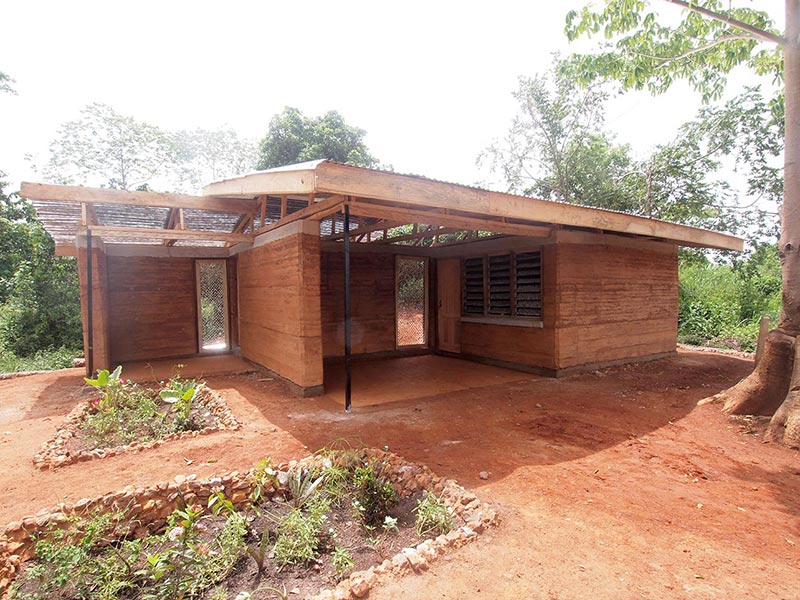
The completed house is named Nkabom House. Webster reflects on the significance of the name: “”The local workers, volunteers and myself named the building Nkabom House. The Nka prefix represents the foundation and Nkabom means unity in Twi and representing the house as a consequence of unifying different materials and cultures in the spirit of collaborative building.”
Altogether, the workshop consisted of a workshop leader, eight international participants and twelve local participants, working together through collaborative building and exchange of knowledge to uncover the mechanics of earth architecture from foundation of the building to landscaping of the built unit. And there were thirty one school children from the local school who helped weave the window louvres. women and a dozen more kids from the village helped by collecting and washing water sachets and stones from the village, and by preparing cassava starch for waterproofing the wall surfaces.
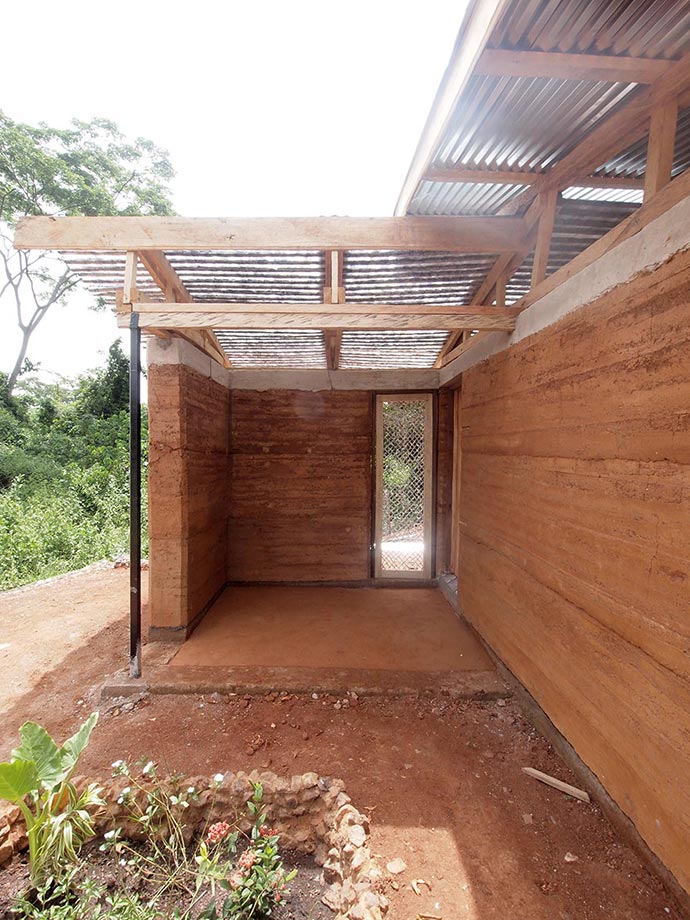
Construction Budget: £4995.22 (cost of local labor and material)
Function: A residential building for volunteers to stay in as part of the development of Nka Foundation’s Arts Village. The house has one bedroom, one bathroom plus outside areas for eating, cooking and hanging washing (see attached plan – 1:50 scale on A3 paper)
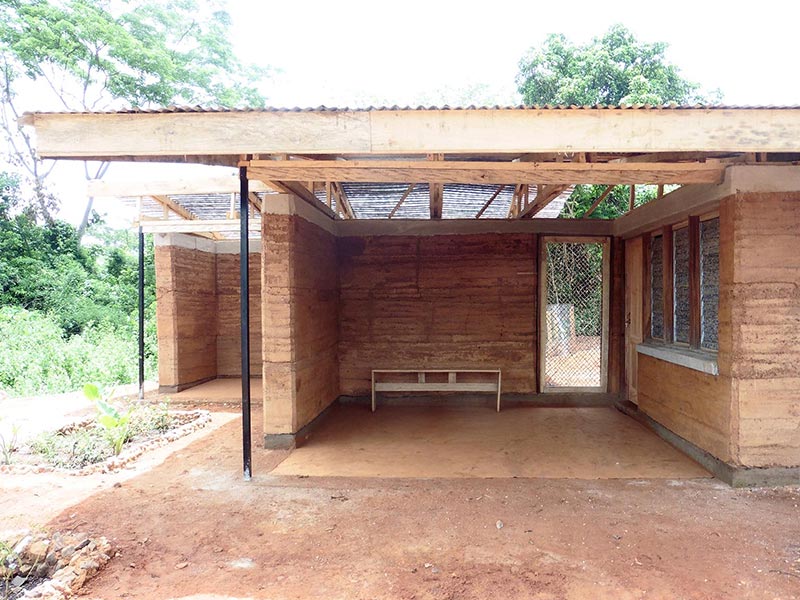
Eliana Stenning reflects on the Ghana experience:
We arrived in Ghana with no set or preconceived design but with informed concepts and intentions to collaborate and further learn from the local Ashanti people and to generate a mutual exchange of knowledge. The invaluable design and hands on experience that I have gained has really enriched my architectural development and I would encourage anyone with an interest in architecture or sustainable design to engage with the mission in Abetenim.
Phoebe Stock proffers her perspective on the workshop: “It was important for us to arrive on site with a strong concept but with no fixed design, allowing our building to be a reaction to site conditions, such as location, orientation and topography, as well as responding to the materials and the labour available. We spent the first week clearing and analysing our site, exploring the village, getting to know the local team we would be working with and finalising our design… Every day was challenging and rewarding; you learn that you can’t take anything for granted, such as the availability of certain tools, materials, electricity and running water, so you have to be very creative in problem solving and making design decisions. I believe participating in a design and build workshop to be an invaluable experience; it is not only an opportunity to gain hands on practical experience, but also an exchange of knowledge, skills and ideas; a collaboration between people and place.”
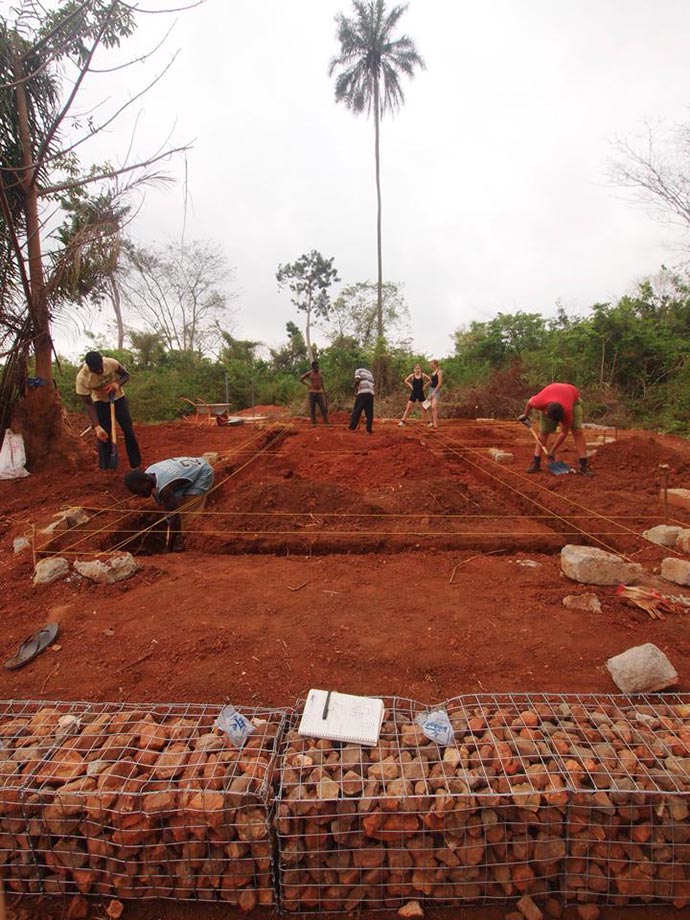
Anna Webster, the workshop leader made a project statement as follows, a vade mercum for younger architects and builders to think about while planning a building project in a similar place: “My design entry looked at combining materials of different structural and aesthetic qualities to create a compound building system. As well as being physically more robust, this new system would be perceived locally as something innovative and disassociated with the previous problems connected to mud architecture. However, further than simply realising the finished design entry from the competition, the building workshop is forming a large part of my thesis at London Metropolitan University and presents the opportunity to develop the design further creating a new built outcome.
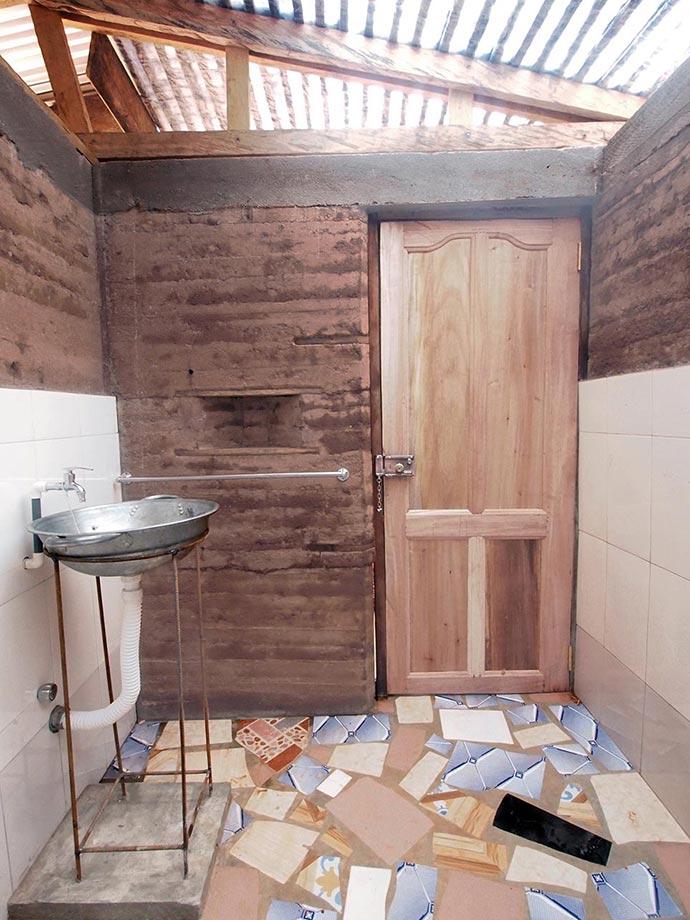
This new built outcome is the result of the collective effort of international volunteers and local labourers. Rather than the workshop imposing on the village a preconceived plan developed in London, the design encapsulates real local initiative and understanding derived from situational assessment. The built solution consequently retains the original initiatives developed from my competition entry, yet represents a truly collaborative endeavour of volunteers and locals combined.
The project focused on utilising local resources, labour and techniques whilst extending those capabilities into a modern design perspective. Our approach centred on rethinking the vernacular and reinventing materials which are often discarded or overlooked.
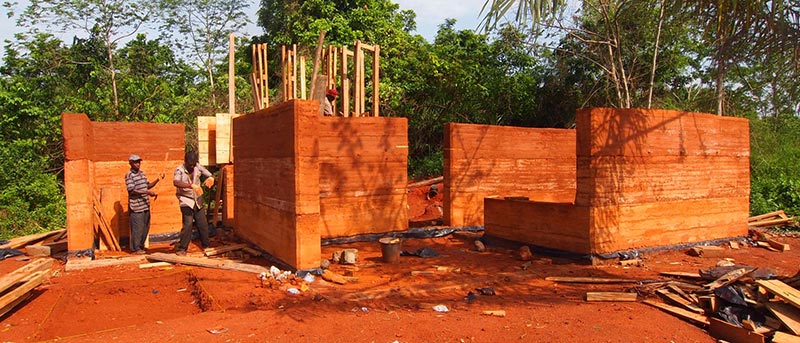
With this in mind, pure water sachets were used in conjunction with mud as a building material. Pure water sachets cause vast environmental and sanitation issues in Ghana. Littering the streets, they block drains causing a spread of waterborne diseases and a habitat for mosquitoes. We used this same waterproof quality to positive effect, using the water sachets to create an affordable and beautiful alternative to commonly used corrugated metal roofing sheets. In addition to this the sachets were used as louvre blades which the school children helped to weave by hand as part of their creative arts class. With the lack of organised waste collection and removal in Ghana, recycling is not common practice. Innovation in material reuse could make a great impact in addressing the environmental damage wreaked by the sachet water industry. This project responds to this by transforming these discarded water sachets into tangible objects of beauty and value.
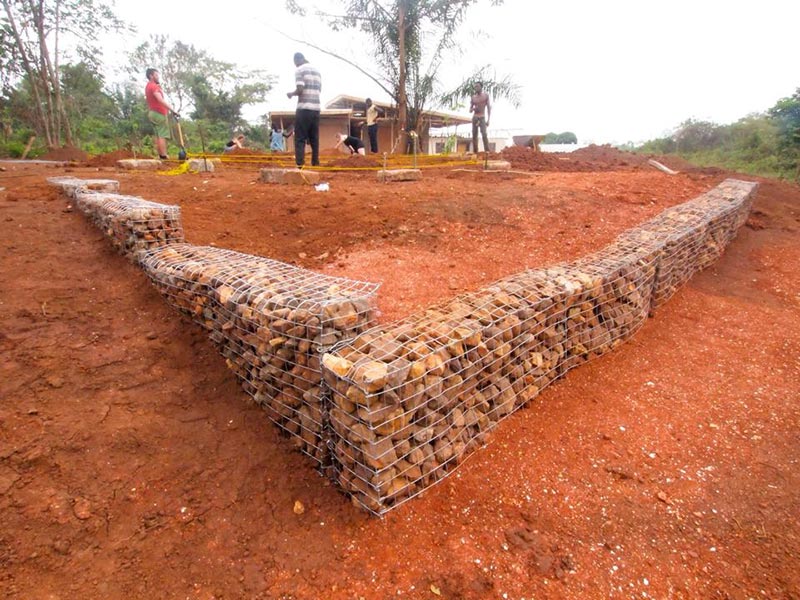
With the intent of moving away from the primitive image of building with mud, the project uses rammed earth to achieve a contemporary aesthetic derived from traditional practice. This constructive system gives the house a great deal of character; each wall is unique as imprints of wood grain from the formwork are left behind in the surface. Furthermore, as a prototype and educational programme, the building workshop presented the opportunity to be explorative and daring, adopting a bold approach of experimentation. The prototype was used to test and expand the possibilities and limitations of rammed earth construction using custom made formwork to create alcoves for shelves and angled openings within the walls.
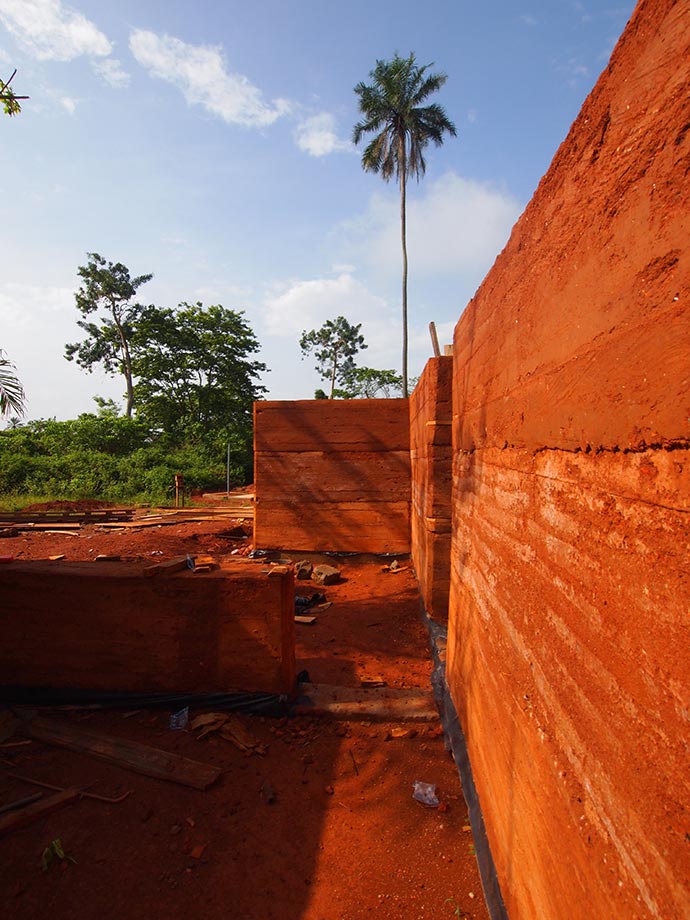
As part of Nka Foundation’s ongoing development of the Arts Village in Abetenim, the building (Nkabom House) hopes to inform future projects who can learn from, build upon, change and improve the systems it employs. Embedded within the physical makeup of the house are a background of ideas, exploration, trial and error which we hope will serve to guide future projects in the village. The workshop has provided a great deal of eduction to international visitors and local workers alike: the village is now equipped with a local team of rammed earth experts who have the means to take forward traditional and sustainable earth construction in this new form. The project facilitates development through capacity building and exchange of cross cultural knowledge, a legacy which we hope will be continued in Abetenim and throughout the rest of Ghana.”


